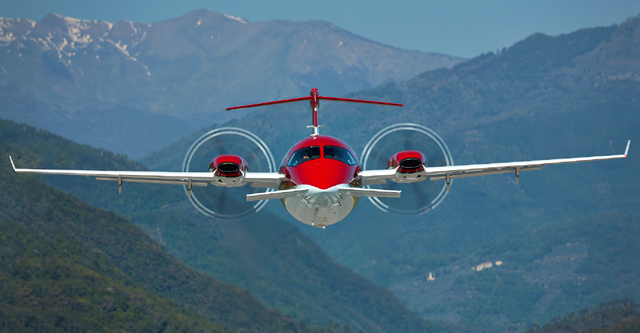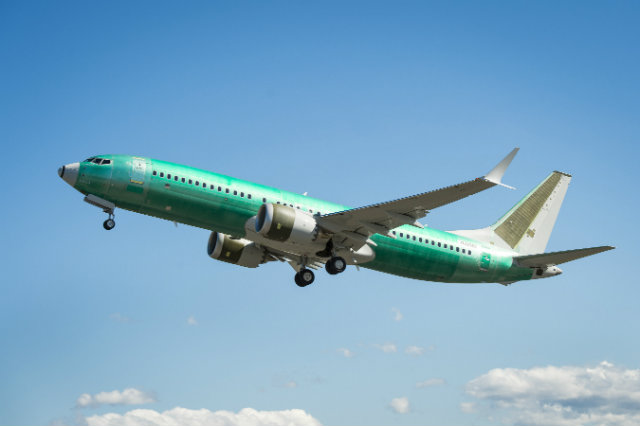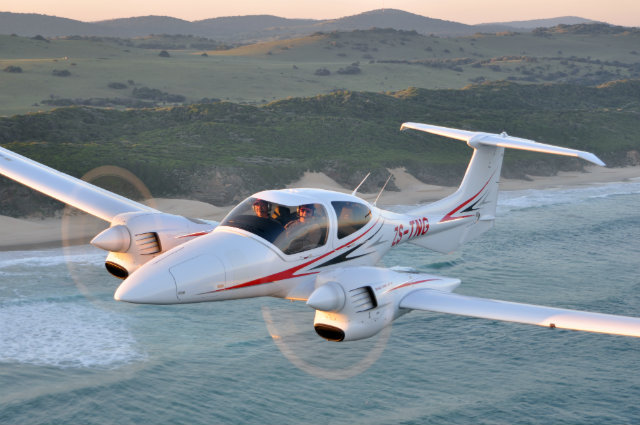Worldwide shipments of business and general aviation aircraft rose modestly in the first quarter, but performance across the sector was mixed.
In its latest quarterly review, released on 10 May, the General Aviation Manufacturers Association records total deliveries of 447 fixed-wing aircraft in the three months ended 31 March, compared with 435 aircraft in the same period last year. GAMA data records shipments of piston-, turboprop- and jet-powered aircraft; total first-quarter shipments were valued at $3.8 billion, an increase of $100 million on the first three months last year.
The turboprop sector was the best performer during the period, GAMA data shows: deliveries rose by 12.7% year on year to 115 units, compared with 102 shipments in the first three months of 2017.
Key to the increase was renewed interest in the Beechcraft King Air family, following a period of declining sales: demand for the Textron Aviation high-speed twin-turboprop increased, with the airframer shipping 17 units in the first quarter, up on 12 examples a year earlier. The flagship 350 series led the charge, with deliveries climbing by four units to 10.
The Cessna Caravan single-engined turboprop range also performed well, with output rising to 12 aircraft, from eight in the first quarter of 2017.
Piper's turboprop-single pair made impressive gains too: output of the M500 trebled, from one to three units, while deliveries of the flagship M600 more than doubled to seven units.
The decision by Piaggio last year to reinvigorate the sales and marketing effort for its P180 Avanti Evo as part of company's new five-year strategic plan may finally be starting to bear fruit: the Italian airframer shipped three of the twin-pusher turboprops in the first quarter, one more than in the whole of 2017.

Piaggio
JET BOOST
Output for the business jet sector grew by a modest 1.5% in the first quarter, with 132 aircraft delivered compared with 130 last year.
Pilatus made its sector debut, delivering the first two superlight PC-24s in February and March, from a planned output for 2018 of around 20 units.
Cessna delivered 36 Citation-series business jets, one more than last year. Output was up for the four members of its seven-strong line-up, led by the CJ3+, which doubled from three to six units. However, deliveries of the entry-level M2 fell from eight to six aircraft and Cessna failed to ship a single Sovereign+ in the first quarter, GAMA data shows.
The poor performance of the legacy midsize twin is a reflection of the increasing popularity of its cheaper and wider midsize stablemate, the Latitude, which has proved a consistently strong performer for Cessna since its introduction in mid-2015. Latitude shipments rose by two units in the first quarter, to 12 aircraft.
Cirrus delivered 10 SF50 Vision Jets in the three-month period, compared with no output for the single-engined personal jet during the same period last year, GAMA’s report shows. Although the six-seat type entered service in December 2016, teething problems with the production process delayed further shipments until the second quarter of 2017. The US airframer plans to produce up to 50 Vision Jets this year as it seeks to clear a 600-strong backlog.

Cirrus
Embraer was one of the worst performers in the business jet sector in the first quarter. Strong competition in the crowded light and midsize markets led to a 27% fall in shipments for the Brazilian airframer, from 15 in the first three months of 2017, to 11 aircraft this year.
Dassault has also had a poor start to 2018. Although GAMA’s quarterly report does not include shipments of Falcon business jets – as the French airframer releases its deliveries and earnings at six-monthly intervals – Flight Fleets Analyzer records five Falcon deliveries for the period – four flagship 8Xs and a large-cabin 900LX. This compares with nine shipments during the same period last year, consisting of the same number of 8X and 900LX trijets as well as four twin-engined 2000LXS/S.
Elsewhere in the business jet sector, Bombardier shipped 31 Learjets, Challengers and Globals – a year-on-year increase of two units. Gulfstream saw its output of large-cabin G550 and G650s slide by four units to 19, although shipments of its super-midsize G280 remained unchanged at seven.
TOP-END TROUBLES
Airbus delivered no VIP airliners for the fifth consecutive quarter, GAMA data shows, as consistently weak demand from the traditionally strong markets of China and the Middle East continued to hit sales of its ACJ family.
The airframer has an order backlog for only one widebody – an ACJ350-900 – and 11 ACJ319/320neos. The first example from the re-engined single-aisle family, an ACJ320neo, is scheduled for delivery to Swiss completion house AMAC Aerospace in the fourth quarter of 2018.

Boeing
Boeing fared better between January and March, shipping two green BBJ 777-300ER widebodies and a pair of 737-derived BBJs. This compares with three widebody deliveries during the same period last year. As with rival Airbus, demand in the narrowbody segment is shifting to the re-engined option, with over 20 orders for its BBJ Max trio secured to date. Boeing is now preparing its first example – a BBJ Max 8 – for delivery to Comlux Completions in late 2018.
PISTON PRESSURE
It was a lacklustre first quarter for the piston-engined sector, meanwhile. Deliveries dipped by 1.5% from 203 to 200 aircraft, with the slide due almost entirely to Textron Aviation’s poor performance. Soft demand from the owner-flyer market led to a fall in shipments of Cessna's family of high-end piston singles from 40 to 21, while output for Beechcraft's Baron and Bonanza fell from eight to two units.
In contrast, Diamond recorded a 48% hike in deliveries of its DA-series from 21 to 31 aircraft, GAMA data shows, thanks largely to a surge in demand for its single- and twin-engined designs from international pilot training schools. The DA42 was the top performer, with output climbing from four to 17 aircraft.

Diamond Aircraft
GAMA president Peter Bunce describes the industry's first-quarter performance as "trending positively". He says the "stabilising" used aircraft market, global economic growth and the introduction of new programmes such as the Citation Longitude, G500/G600 and Global 7000 – all set for service entry by the first quarter of 2019 – will help to stimulate the market.
Source: Flight International


























